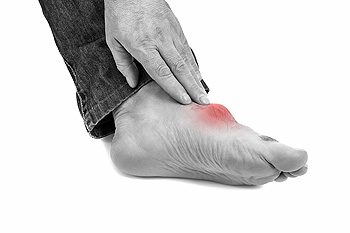 Common symptoms that are often associated with gout can include severe pain and discomfort in the big toe, as well as swelling and redness. Gout is a form of inflammatory arthritis caused by a buildup of uric acid crystals in the joints. The body produces uric acid when it breaks down purines, which are naturally found in the body, but they are also found in certain foods and drinks. Some examples of foods that are rich in purines are shellfish, red meat, organ meats such as liver and kidney, processed meat, beverages that contain high fructose corn syrup, and beer. Many patients experience gout attacks that can be so debilitating it may be impossible to walk or complete daily activities. If you are afflicted with bouts of gout, it is strongly suggested that you speak to a podiatrist who can offer various treatment techniques. Although there is no cure for gout there are medications to manage it, as well as lifestyle changes to reduce and possibly eliminate attacks.
Common symptoms that are often associated with gout can include severe pain and discomfort in the big toe, as well as swelling and redness. Gout is a form of inflammatory arthritis caused by a buildup of uric acid crystals in the joints. The body produces uric acid when it breaks down purines, which are naturally found in the body, but they are also found in certain foods and drinks. Some examples of foods that are rich in purines are shellfish, red meat, organ meats such as liver and kidney, processed meat, beverages that contain high fructose corn syrup, and beer. Many patients experience gout attacks that can be so debilitating it may be impossible to walk or complete daily activities. If you are afflicted with bouts of gout, it is strongly suggested that you speak to a podiatrist who can offer various treatment techniques. Although there is no cure for gout there are medications to manage it, as well as lifestyle changes to reduce and possibly eliminate attacks.
Gout is a painful condition that can be treated. If you are seeking treatment, contact Jim Maxka, DPM from South Penn Foot & Ankle Associates. Our doctor will treat your foot and ankle needs.
What Is Gout?
Gout is a form of arthritis that is characterized by sudden, severe attacks of pain, redness, and tenderness in the joints. The condition usually affects the joint at the base of the big toe. A gout attack can occur at any random time, such as the middle of the night while you are asleep.
Symptoms
- Intense Joint Pain - Usually around the large joint of your big toe, and it most severe within the first four to twelve hours
- Lingering Discomfort - Joint discomfort may last from a few days to a few weeks
- Inflammation and Redness -Affected joints may become swollen, tender, warm and red
- Limited Range of Motion - May experience a decrease in joint mobility
Risk Factors
- Genetics - If family members have gout, you’re more likely to have it
- Medications - Diuretic medications can raise uric acid levels
- Gender/Age - Gout is more common in men until the age of 60. It is believed that estrogen protects women until that point
- Diet - Eating red meat and shellfish increases your risk
- Alcohol - Having more than two alcoholic drinks per day increases your risk
- Obesity - Obese people are at a higher risk for gout
Prior to visiting your podiatrist to receive treatment for gout, there are a few things you should do beforehand. If you have gout you should write down your symptoms--including when they started and how often you experience them, important medical information you may have, and any questions you may have. Writing down these three things will help your podiatrist in assessing your specific situation so that he or she may provide the best route of treatment for you.
If you have any questions, please feel free to contact our office located in Hanover, PA . We offer the newest diagnostic and treatment technologies for all your foot care needs.
